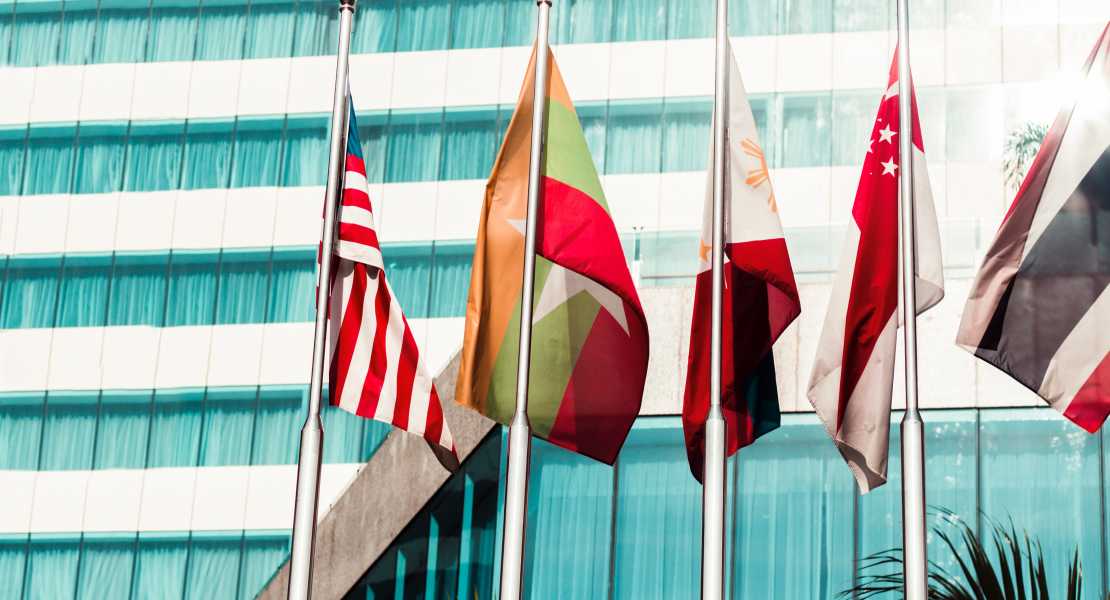I. Introduction
Twenty-five years ago, no one was talking about “diversity” in international arbitration. Generally, diversity was an alien concept 25 years ago, let alone in Arbitration. More so, the arbitration community was a tightly-knit, Anglo-European (plus the odd American) gentlemen’s club, where everyone knew everyone else, either personally or by reputation, where arbitrators and counsel regularly lunched or golfed together, and where everyone was usually familiar with the style and proclivities of the other members. Today, diversity in international arbitration has become a topical subject, with this facet of the legal profession having been recognized as being largely dominated by men and arbitrators mostly concentrated in the metropolitan hubs of Western Europe and North America.
This profound lack of diversity among arbitrators sitting on (tribunals has been confirmed on numerous occasions through the statistics of various institutions. For instance, the International Chamber of Commerce (ICC) statistics on arbitral appointments for 2016 shows that, up to November 2016, only 20% of appointed arbitrators were women. Thus, the view that there should be more diversity in international arbitration is one that has received general support. The excuses for this the lack of diversity has been plentiful. Some claimed that the problems and misinterpretations caused by gender and/or cultural diversity are more than ever evident. It was claimed that diversity could make parties talk at cross-purposes, even when they speak the same language or that it may turn the tools of dispute resolution: words and reason, into dangerous weapons that may unexpectedly attack as well as backfire. Others said that between the varying connotations of East, West, North, and South, between different politics, economics, religions, languages, genders, sexual preferences and legal systems, a dispute about an ordinary commercial contract can open Pandora’s box. Nevertheless, in the last few years, there have been deliberate attempts at promoting diversity in international arbitration. This aims to ensure that everyone has an equal opportunity of participation and is not discriminated against by his or her gender, age, ethnicity or nationality. According to the Director General of the London Court of International Arbitration (LCIA) Jackie van Haersolte-van Hof, this will go a long way in promoting international arbitration by ensuring that this dispute mechanism is truly ‘international’. Diversity in international arbitration is not only important, but it is also essential to the longevity and legitimacy of the process. Diversity enhances the quality of the process – different perspectives in a tribunal leads to better decision-making and it is therefore in the interests of the internal arbitral process that diversity is achieved. To maintain a sustainable pool of arbitrators from which institutions can appoint, it has been suggested that younger and more diverse individuals be appointed to arbitral tribunals.
Thus, this article examines the manner in which deliberate attempts have been made to promote diversity in international arbitration. This takes into consideration variables such as ethnicity, gender, and age. Part II examines the diversity deficit in international arbitration. Part III examines the current movement towards enhancing the degree of diversity in international arbitration.
II. The Diversity Deficit in International Arbitration
As aforementioned, nobody was talking about the level of “diversity” in international arbitration two decades ago. If the word was ever mentioned, it was likely to have referred to the multiplicity of the claims that were being presented to arbitral tribunals. Little attention was paid to the people who were actually deciding on those claims or the counsels representing parties in international arbitration. To paraphrase a famous international counsel/arbitrator: “When we choose an arbitrator, diversity is the last thing on our minds. We’re not trying to make a statement; we simply want the best person for that particular case.” Therefore, the state-of-affairs in international arbitration could best be described as embodying a diversity deficit. As mentioned above, the discipline was largely dominated by white men from the Euro-American basin and this diversity deficit was reflected in the arbitration panels of many arbitral institutions. For a long time, this could be attributed to the fact that international arbitration was not very sophisticated outside of Europe and North America.
However, today, in the first quarter of the 21st Century, international arbitration has evolved. For instance, many countries outside of the Euro-American basin has sought to enhance their legal systems to cater to international arbitration. This can be seen in the many arbitration institutions that have been established globally: from Singapore to Hong Kong, Dubai to Bahrain, Mauritius to Rwanda, Australia and New Zealand and the British Virgin Islands to Jamaica. Thus, we are noticing a rapid increase in a number of disputes that are being brought to international arbitration. Increasingly such disputes are originating from jurisdictions where arbitration was not traditionally utilized in dispute resolution. In 2014, the ICC court received over new 700 arbitration cases, involving parties from 14 different jurisdictions. To some degree, this example can be replicated around the world as the caseload of each arbitral institution grows each year. As a result, the conversation has dramatically changed. More arbitral disputes arise between non-traditional arbitration countries, with a desire to settle them in situ. Women have entered the business world, and the field of law, in droves. More women than ever are employed in the field of law and more specifically in corporate legal teams. Nevertheless, the faces of the counsel leading the legal teams, and of the arbitral tribunals deciding the disputes, as well as the location of the hearings remain with the exception of a couple of high-profile exceptions-overwhelmingly white, Caucasian and male and Western European or American.
A survey conducted by the firm of Berwin Leighton and Paisner, released on 10th January 2017, investigated and reported on the attributes that are taken into account by parties when nominating an arbitrator and the importance given by parties to each of these factors. In determining the tribunal, the expertise of an arbitrator is placed the highest on the list of attributes ranked by importance. The Survey reports “93% of respondents felt that a potential candidate’s expertise was either ‘very important’ or ‘important’”. The expertise of potential arbitrators was followed by efficiency, for which 91% of respondents opined as a “very important” or “important” consideration in the nomination process (page 9 of the Survey). Gender and ethnicity, on the other hand, was ranked lower on a stand-alone basis. Only 12% considered gender as “very important” or “important” factor, while 24% of the respondents found that ethnicity/national identity was worth consideration when nominating an arbitrator (page 8 of the Survey). However, when respondents were asked to view all the potential candidates as if they were all equal in regards to their level of expertise and experience, the results told a different story. “On gender, only 6% of respondents said “No”, it was not desirable to have gender balance. Other responses were evenly divided. 50% of respondents thought that it was desirable to have gender balance on arbitral tribunals but 41% thought “It makes no difference”.” (page 8 of the Survey),“Responses on ethnicity and national background followed a similar pattern with 54% saying “Yes”, 31% saying that “It makes no difference” and 10% saying “No”.” This reveals that there is quite a bit of work left to be done in achieving the degree of diversity with which all stakeholders can be happy.
From the above, it can be said that the international arbitration community has traditionally paid less attention to the extent to which women, non-Caucasian, persons who consider themselves to be part of the LGBT community or persons with disabilities have acceded arbitration tribunals. The international arbitration community has traditionally focused more on tribunals’ ability to effectively resolve disputes and has paid less attention to the constitution of these tribunals. Thus, due to the fact that international arbitration is more sophisticated in Europe and North America, one finds that the arbitrators have been predominantly white. This enduring dominance of the white Caucasian male is worrying. For all their effort, due to traditional biases, women and non-Caucasian aspirants are finding difficult to accede international arbitral tribunal panels, thereby prompting the international arbitration community to make deliberate attempts to enhance participation of these marginalized groups.
III. A Deliberate Improvement in the Degree of Diversity in International Arbitration
Over the last few decades, the changing and changed arbitration community has awakened to wonder whether this narrow mould represents the best resourcing for the resolution of disputes, which bring into play dozens of different legal systems, cultures, and expectations. Increasing appreciation of the diversity deficit that is being currently experienced in international arbitration has prompted a call to action by many stakeholders. The aim is to ensure that international arbitration is able to attract the best talent by ensuring that all suitably qualified persons have a fair opportunity to participate regardless of ethnicity, gender, age or any of the other variables commonly associated with diversity. Therefore, the conversation has turned to a serious consideration of diversity.
According to the results of the diversity survey conducted by the firm Berwin Leighton and Paisner, 80% of respondents thought that tribunals contained too many white arbitrators, 84% thought that there were too many men, and 64% felt that there were too many arbitrators from Western Europe or North America. On the assumption that all potential candidates have the necessary level of expertise and experience, 50% of respondents thought it was desirable to have a gender balance on arbitral tribunals and 54% thought it was desirable that the tribunal should come from a diverse range of ethnic and national backgrounds. This survey suggests that there is a clear drive to improve diversity, both in respect to gender and ethnicity. As regards responsibility for change, the clear message from respondents was that everyone has a part to play in improving diversity on arbitral tribunals. According to the survey, 65% thought that counsel for the parties also had an important role, 60% thought that arbitrators had a part to play and 78% of respondents thought that arbitral institutions have a role to play.
In relation to gender diversity, as the premier international organization promoting women in international dispute resolution, ArbitralWomen have taken a leading role in promoting diversity in international arbitration. This organization is an international non-governmental organization (NGO) with the primary objective of advancing the interests of women and promoting female practitioners in international dispute resolution. It is a network of women from diverse backgrounds and legal cultures active in international dispute resolution in any role, including inter alia, arbitrator, mediator, expert, adjudicator, surveyor, facilitator, lawyer, neutral, ombudswoman, and forensic consultant. It provides an opportunity for women to meet other women in the field, exchange ideas, mentor new practitioners and celebrate the future of women in international dispute resolution. ArbitralWomen is also a source of information on recent developments concerning women in international dispute resolution. The group has grown to nearly a thousand members from over 40 countries and describes itself as an effective tool to advance women’s interests in dispute resolution, enhance their involvement and improve their visibility. It presents itself as a source of practitioners from jurisdictions around the world, and a source of referrals for both women and men and now enjoys observer status at UNCITRAL Working Group Sessions.
The LGBT community is also beginning to be recognized in this regard. In recent years arbitration law firms have rushed to jump aboard ever-accelerating bandwagons of workplace policy commitments to equal treatment of lesbian, gay, bisexual and transgender people. Equality and diversity policies have proliferated in abundance. It is commonplace now to find chapters within law firm staff manuals expressly acknowledging the rights of LGBT minorities to be open about their sexual orientation in the workplace, and prohibiting discrimination based on their courage in expressing themselves in both a professional and private context. “Don’t ask, don’t tell” is thankfully now a fundamentally inexcusable approach in arbitration law firm written staff manuals and workplace policies. For instance, according to a former partner at Holman Fenwick Willan, the firm’s management was absolutely committed to diversity in its formal policy documentation, and that commendable approach has fanned out amongst some of the less progressive (and indeed less technically competent) arbitration practices across the City of London.
As the above illustrates, a great deal of work is currently being undertaken by different stakeholders in enhancing diversity in international arbitration. This is illustrated by the different initiatives that have been undertaken by the parties involved. However, while increasingly facets such as gender diversity and diversity based on sexual orientation are increasingly attracting attention; the same cannot be said about diversity based on ethnicity. According to the International Chamber of Commerce (ICC) International Court of Arbitration 2013 Statistical Report, there is a lack of ethnic diversity in international arbitration. That is despite the fact that 32.3% of the parties to the International Chamber of Commerce (ICC) arbitration in 2013 being from Africa, Asia, and the Pacific, less than 15% of the arbitrators appointed in 2013 were from these regions.
As aforementioned, addressing the diversity deficit in international arbitration is crucial to the longevity and legitimacy of the arbitral process. To maintain a sustainable pool of arbitrators from which institutions can appoint parties and institutions need to revisit their behaviours/policies. Jackie van Haersolte-van Hof, the Director General of the LCIA, claims that this will go a long way in promoting international arbitration by ensuring that this dispute mechanism is truly ‘international’. The inclusion of individuals of varied racial, ethnic, gender and social backgrounds has a value in itself. A system serving the needs of a particular constituency – in this case, participants in international commerce – should reflect the make-up of that community. A lack of diversity may also affect the quality of arbitral awards, thus the deliberative process before the arbitral tribunal is likely to be crucial and, therefore, the diversity of views may be fundamental for a fair process and outcome. Widening the pool of arbitrators will give greater choice and fewer conflicts, remove the imbalance in information available to different parties and encourage greater efficiency, as well as facilitating new perspectives on the dynamics of a dispute. Moreover, a diverse tribunal may be better prepared, more task-orientated, and more attentive to the parties’ arguments than a non-diverse.
IV. Conclusion
Achieving suitable diversity in international arbitration will require more effort from all involved but the last few years have seen the promotion of a number of changes driving the marker in the right direction. First, the diversity deficit has been recognized by key stakeholders in international arbitration and has seen institutions and firms advocate for an increased level of diversity as well as publishing statistics with the view that access to diversity information can only benefit this cause. In relation to gender diversity, ArbitralWomen have taken the lead in promoting women in international arbitration and various institutions and prominent members of the international dispute resolution community have signed the Equal Representation in Arbitration Pledge. The pledge sets out meaningful and actionable steps that the arbitration community can take towards rapidly increasing, on an equal opportunity basis, the number of women appointed as arbitrators. We also note the happening of various other initiatives, such as LGBT initiatives, that promote increased diversity, for instance when JAMS sponsored the LGBT Bar Association, Los Angeles LEGALITEA Counsel Award Reception. However, there is still much work to be done in targeting and promoting diversity in relation to all the other variables commonly associated with diversity.







